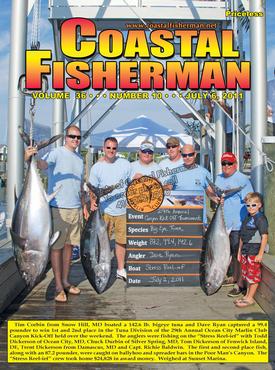


Article by Pat Schrawder
 GUARDING YOUR ELECTRONICS
GUARDING YOUR ELECTRONICS
In today’s world of electronics, it’s all about computers. Practically everything has some computer controlled feature, including your ship’s electronics. Unless you have a full power outage at your house, you’re going to be fine. Your boat is a little bit of a different situation.
DC voltage on your boat varies a lot. Every item you have that puts a drain on your batteries can add up to a critical situation on board. If your alternator is operating properly, you should be able to overcome power insufficiencies. However, your alternators are only working when your engine(s) is running, and running your engines all day is costly. In addition, because of the computerized nature of many of today’s marine electronics, a temporary dip in voltage supply caused by starting your engines can wreak havoc with your equipment causing it to scramble its microprocessors programming.
One company has cornered the market on a variety of devices to prevent voltage problems. The company is NewMar. Widely known for their line of battery chargers and conditioners, they
produce much more. They can be found online at www.newmarpower.com if you want to check out all of their products. I’d like to focus on just two of them right now.
First is their “Start Guard” backup power supply. Measuring roughly 8”x 5” x 4”, this small powerhouse provides supplemental voltage to connected devices when the engine is started to eliminate problems caused by temporary low voltage. Similar in design and purpose to a backup power supply for your home computer, it contains a sealed rechargeable battery that provides power to your electronics whenever the starter switch or solenoid on your boat is engaged. Once your engine is running, it switches off automatically and begins recharging itself with your boat’s alternator. It is simple to hook up, small in size and weight (5 pounds) and relatively inexpensive, retailing for $215.00. It provides 20 amps of backup so you can easily calculate how many items you can connect to any one unit.
Similar to the “Start Guard” is their “Nav-Pac” power conditioner/noise filter/spike protector”. In fact, it’s almost like a deluxe Start Guard in that it does what the Start Guard does but has some additional features. For one, it includes a filter that reduces electrical interference (noise) coming from other sources on your boat and it absorbs line spikes from motors and alternators. One feature that is particularly nice is the remote monitor panel that is included with the main unit. It shows power input and output as well as level of “Nav-Pac” engagement.
The “Nav-Pac” provides back up power for 15 minutes for 7 amps, 8 minutes for 10 amps, 2 minutes for 15 amps and 1 minute for 20 amps. To give you an idea of how this works out, a typical VHF draws 5 amps on transmit and considerably less on receive. A GPS plotter draws around 2 or 3 amps and an LCD fishfinder about the same. If you want to figure out just how much your equipment draws, you can find it listed in the manual or brochure. You’re looking for amps, but if your unit’s specifications show watts instead, you can do the math using Ohm’s Law or go to any number of websites to do the calculation for
you. One such site is: http://www.sengpielaudio.com/calculator-ohm.htm .
Clearly, the “Nav-Pac” is not designed to take the place of your ship’s batteries but rather to supply temporary power for short bursts. Of course, today’s electronics typically draw very little current as stated above. This unit obviously costs more than the “Start Guard” because it does more. The “Nav-Pac” retails for $439.00. It is also simple to install and comes with full instructions on how to do so.
Both of these units are excellent devices. You might want to consider adding one or the other to your electronics package to keep your equipment running at its peak and reduce the chances of needless service calls.
Pat and her husband, Larry are owners of L&L Marine Electronics on Golf Course Road in West Ocean City, MD.